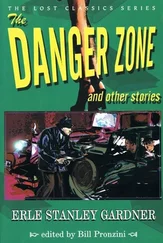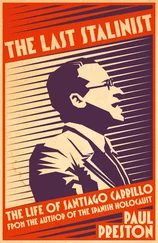He deteriorated rapidly after the surgery, and his kidneys began to fail. He appeared to be dying. At that time, Antonia Bagshawe, his physician, had to travel abroad, and he came under the care of a doctor named David Silverstein. The prospect of kidney failure and dialysis for Dr. Musoke created a climate of emergency at the hospital—he was well liked by his colleagues, and they didn’t want to lose him. Silverstein began to suspect that Musoke was suffering from an unusual virus. He collected some blood from his patient and drew off the serum, which is a clear, golden-colored liquid that remains when the red cells are removed from the blood. He sent some tubes of frozen serum to laboratories for testing—to the National Institute of Virology in Sandringham, South Africa, and to the Centers for Disease Control in Atlanta, Georgia, U.S.A.
Then he waited for results.
David Silverstein lives in Nairobi, but he owns a house near Washington, D.C. One day in the summer recently, when he was visiting the United States to tend to some business, I met him in a coffee shop in a shopping mall not far from his home. We sat at a small table, and he told me about Monet and Musoke cases. Silverstein is a slender, short man in his late forties, with a mustache and glasses, and he has an alert, quick gaze. Although he is an American, his voice carries a hint of Swahili accent. On the day that I met him, he was dressed in a denim jacket and blue jeans, and he was nicely tanned, looking fit and relaxed. He is a pilot, and he flies his own plane. He has the largest private medical practice in East Africa, and it has made him a famous figure in Nairobi. He is the personal physician of Daniel arap Moi, the president of Kenya, he travels with President Moi when Moi goes abroad. He treats all the important people in East Africa: the corrupt politicians, the actors and actresses who get sick on safari, the decayed English-African nobility. He traveled at the side of Diana, Lady Delamere, as her personal physician when she was growing old, to monitor her blood pressure and heartbeat (she wanted to carry on with her beloved sport of deep-sea fishing off the Kenya coast, although she had a heart condition), and he was also Beryl Markham’s doctor. Markham, the author of West with the Night, a memoir of her years as an aviator in East Africa, used to hang out at the Nairobi Aero Club, where she had a reputation for being a slam-bang, two-fisted drinker. (“She was a well-pickled old lady by the time I came to her.”) His patient Dr. Musoke has himself become a celebrity, in the annals of disease. “I was treating Dr. Musoke with supportive care” Silverstein said to me. “That was all I could do. I tried to give him nutrition, and I tried to lower his fevers when they were high. I was basically taking care of somebody without a game plan.”
One night, at two o’clock in the morning, Silverstein’s telephone rang at his home in Nairobi. It was an American researcher stationed in Kenya calling him to report that the South Africans had found something very queer in Musoke’s blood: “He’s positive for Marburg virus. This is really serious. We don’t know much about Marburg.”
Silverstein had never heard of Marburg virus. “After the phone call, I could not get back to sleep,” he said to me. “I had kind of waking dream about it, wondering what Marburg was.” He lay in bed, thinking about the sufferings of his friend and colleague Dr. Musoke, fearful of what sort of organism had gotten loose among the medical staff at the hospital. He kept hearing the voice saying, “We don’t know much about Marburg.” Unable to sleep, he finally got dressed and drove to the hospital, arriving at his office before dawn. He found a medical textbook and looked up Marburg virus.
The entry was brief. Marburg is an African organism, but it has a German name. Viruses are named for the place where they are first discovered. Marburg is an old city in central Germany, surrounded by forests and meadows, where factories nestle in green valleys. The virus erupted there in 1967, in a factory called the Behring Works, which produced vaccines using kidney cells from African green monkeys. The Behring Works regularly imported monkeys from Uganda. The virus came to Germany hidden somewhere in a series of air shipment of monkeys totaling five or six hundred animals. As few as two or three of the animals were incubating the virus. They were probably not even visibly sick. At any rate, shortly after they arrived at the Behring Works, the virus began to spread among them, and a few of them crashed and bled out. Soon afterward, the Marburg agent jumped species and suddenly emerged in human population of the city. This is an example of virus amplification.
The first person known to be infected with Marburg agent was a man called Klaus F., an employee at Behring Works vaccine factory who fed the monkeys and washed their cages. He broke with the virus on August 8, 1967, and died two weeks later. So little is known about the Marburg agent that only one book has been published about it, a collection of papers presented at a symposium on virus, held at the University of Marburg in 1970. In the book, we learn that
The monkey-keeper HEINRICH P. came back from his holiday on August 13th 1967 and did his job of killing monkeys from 14th-23rd. The first symptoms appeared on August 21st. The laboratory assistant RENATE L. broke a test-tube that was to be sterilized, which had contained infected material, on August 28th, and fell ill on September 4th 1967.
And so on. The victims developed headaches at about day seven after their exposure and went downhill from there, with raging fevers, clotting, spurts of blood, and terminal shock. For a few days in Marburg, doctors in the city thought the world was coming to an end. Thirty one people eventually caught the virus; seven died in pools of blood. The kill rate of Marburg turned out to be about one in four, which makes Marburg an extremely lethal agent: even in the best modern hospitals, where the patients are hooked up to life-support machines, Marburg kills a quarter of the patients who are infected with it. By contrast, yellow fever, which is considered a highly lethal virus, kills only about one in twenty patients once they reach hospital.
Marburg is one of a family of viruses known as the filoviruses. Marburg was the first filovirus to be discovered. The word filovirus is Latin and means “thread virus”. The filoviruses look alike, as if they are sisters, and they resemble no other virus on earth. While most viruses are ball-shaped particles that look like peppercorns, the thread viruses have been compared to strands of tangled rope, to hair, to worms, to snakes. When they appear in a great flooding mess, as they so often do when they have destroyed a victim, they look like a tub of spaghetti that has been dumped on the floor. Marburg particles sometimes roll up into loops. The loops resemble Cheerios. Marburg is the only ring-shaped virus known.
In Germany, the effects of Marburg virus on the train were particularly frightening, and resembled the effects of rabies: the virus somehow damaged the central nervous system and could destroy the brain, as does rabies. The Marburg particles also looked rather like rabies particles. The rabies virus particle is shaped like a bullet. If you stretch out a bullet, it begins to look like a length of rope, and if you coil the rope into a loop, it becomes a ring, like Marburg. Thinking that Marburg might be related to rabies, they called it stretched rabies. Later it became clear that Marburg belongs to its own family.
Not long after Charles Monet died, it was established that the family of filoviruses comprised Marburg along with two types of virus called Ebola. The Ebolas were named Ebola Zaire and Ebola Sudan. Marburg was the mildest of the three filovirus sisters. The worst of them was Ebola Zaire. The kill rate in humans infected with Ebola Zaire is nine out of ten. Ninety percent of the people who come down with Ebola Zaire die of it. Ebola Zaire is a slate wiper in humans.
Читать дальше












